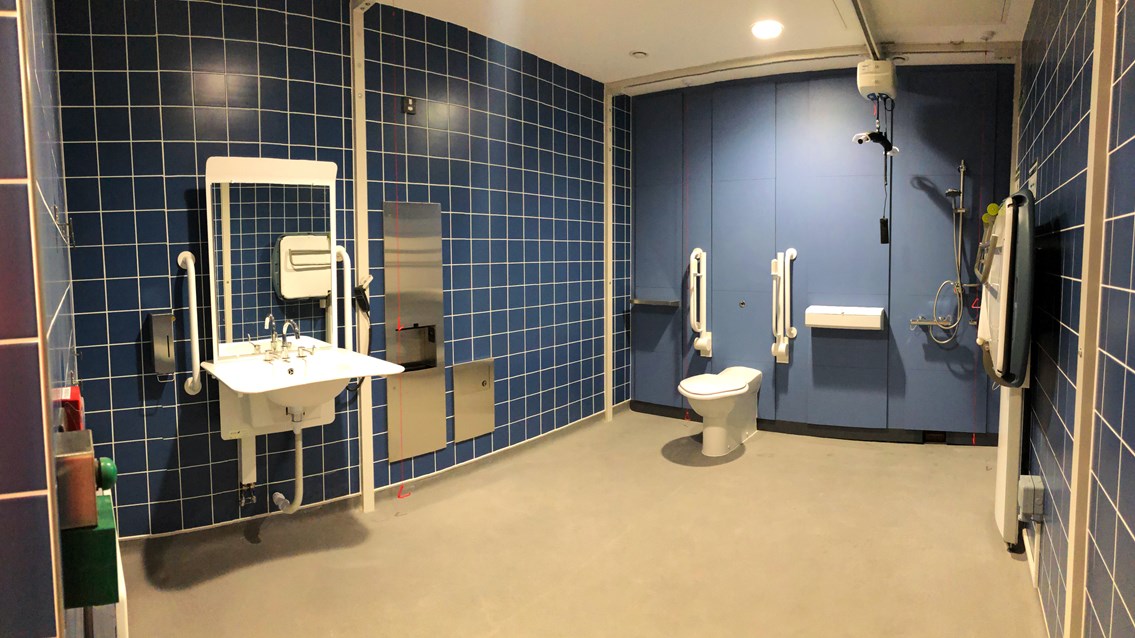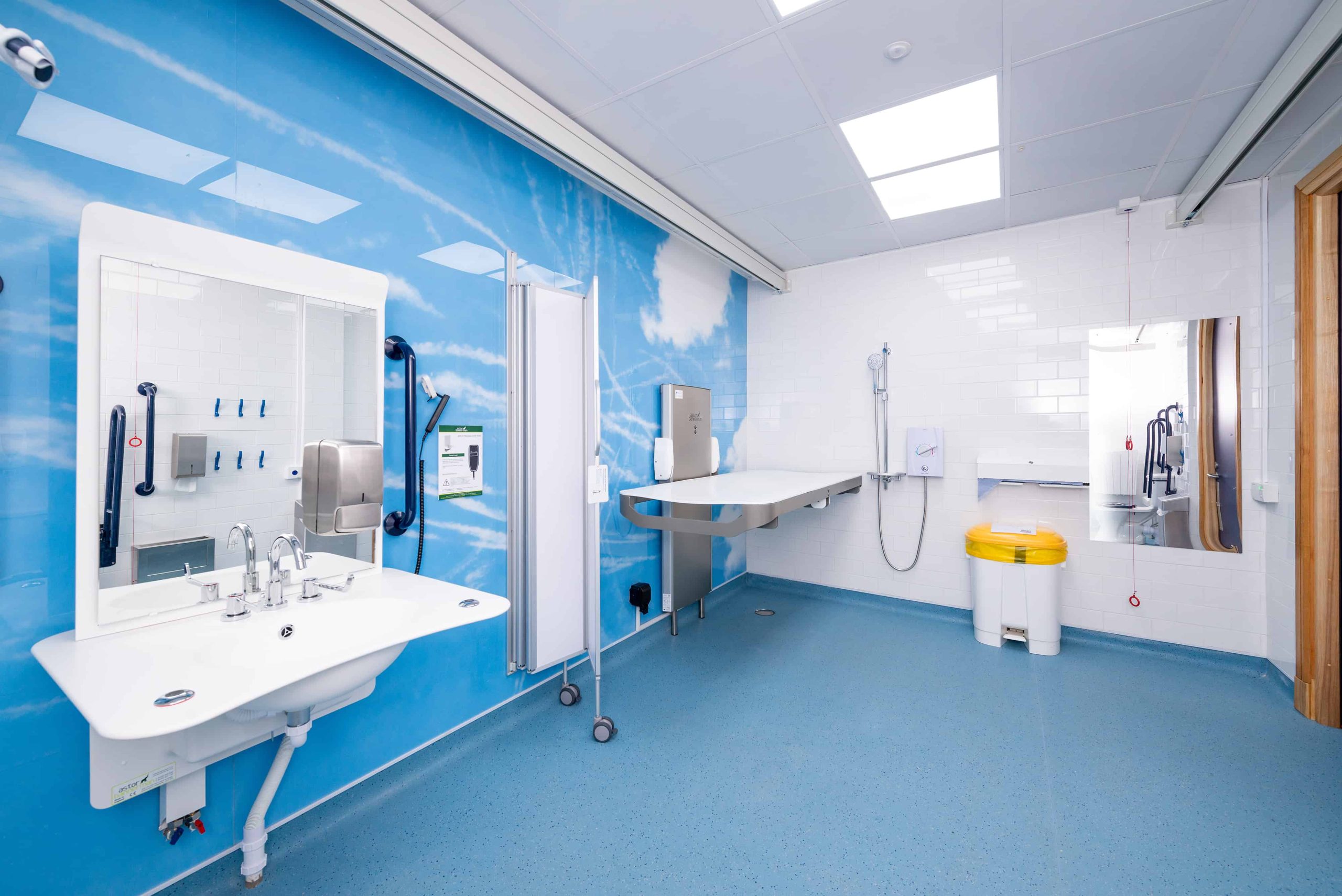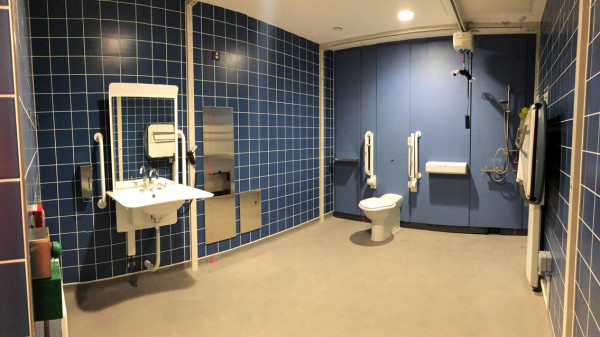Funding for Changing Places Toilets: A How-To Guide
There are a number of ways to source funds for the installation of a Changing Places Toilet (CPT). Sadly (as much as we would love there to be), there is no magic pot of gold to support all Changing Places Projects, but with Government funding announced over the last couple of years, there is more dedicated funding available. Aside from that, we have a few suggestions of possible funding sources below, and there is always a good chance that there are local grants available if you are prepared to put some leg work in to find them – an internet search is a good place to start. For more advice on campaigning for Changing Places Toilets, visit our Campaigner Tools page.
GOVERNMENT FUNDING
 National and Local Governments sometimes offer funding for specific projects such as Changing Places Toilet installation. Check with your local authority for schemes in your area. On a national level, the UK Government announced in July 2021 that Local Authorities could opt-in to receive a portion of a £30m funding pot for Changing Places toilets. There could also be funding available if you are a voluntary, community or social enterprise organisation.
National and Local Governments sometimes offer funding for specific projects such as Changing Places Toilet installation. Check with your local authority for schemes in your area. On a national level, the UK Government announced in July 2021 that Local Authorities could opt-in to receive a portion of a £30m funding pot for Changing Places toilets. There could also be funding available if you are a voluntary, community or social enterprise organisation.
Find out more on the Government website.
SECTION 106 FUNDING (ENGLAND & WALES ONLY)
The local council authority can enter into a Section 106 agreement, otherwise known as a ‘planning obligation’, with a developer where it is necessary to provide contributions to offset negative impacts caused by construction and development. Examples of contributions range from the provision of affordable homes and new open space to funding of school places or employment training schemes. Contributions could also include the provision of Changing Places toilets. The developer can either implement these or make payments to the council for them to be carried out. All Section 106 agreements must be relevant to the development they relate to. The council and planning applicants can use the Section 106 Supplementary Planning Document (SPD) to guide negotiations for Section 106 planning contributions. Contributions may be required before planning permission can be granted.
Members of the public have the opportunity to be involved in Section 106 planning obligations and make representations to the planning authority for each planning application. Representations often include suggestions by members of the public for projects which may mitigate the impact of a new development on an area. Residents or businesses living and working adjacent to a development site will receive a letter at the start of the planning application process detailing who they can contact if they wish to make representations.
Example: A developer constructing 30 new flats will be required to pay Section 106 planning obligations for infrastructure to support the new residents living in the development. The authority will seek to secure a number of planning obligations including:

- Payments towards new school places
- Additional health facilities
- Improvements to the streetscape
- Improvements to the open space
- Public transport improvements
Read the government guidance here
NON-GOVERNMENT FUNDING FOR VOLUNTARY GROUPS AND COMMUNITIES
Depending on the type of organisation, there may be funding available through relevant independent bodies. Here are some examples:
Greater London City Bridge Trust – Supporting charitable activity across Greater London, grants and funds available from surplus funds above bridge requirements.
Lottery Funding – Grants available from £300 to over £500,000 to organisations ranging from local groups to major national charities.
Trust for London – Charitable organisation that exists to reduce poverty and inequality in London by funding in the voluntary and community sector.
The Tudor Trust – An independent grant-making trust which supports voluntary and community groups working in any part of the UK.
BUSINESS GRANTS & SUPPORT
There may be other ways of securing funding. This Government tool can help you find people/organisations who may be able to support your project. Also, searching for local sources of funding online can prove fruitful.
FUNDRAISING
Raising money yourself could be a good way of funding your Changing Places Toilet project. Here are some examples of online fundraising tools:
Crowd Funding – Set a campaign and a target amount to aim for, people donate for causes they feel are worthwhile to them.
Go Fund Me – Set a campaign and a target amount to aim for, people donate for causes they feel are worthwhile to them.
AND FINALLY…
In order to secure funding you may need to show details of the proposed project. We can provide information on design, specification, equipment and costs so please do get in touch with us and we will support you through the process.
ABOUT AVESO
The team at Aveso are passionate about Changing Places toilets. They have supported the official Changing Places campaign since 2013, and can provide free, expert advice on all aspects of the Changing Places planning and design process.
ABOUT ASTOR BANNERMAN
Astor Bannerman offer the full range of products specified by Changing Places regulations, including fixed and mobile changing tables, hoists, height adjustable washbasins, toilets and accessories. They are always developing new products, and are proud to have developed the Astor Invincible, the first changing table designed specifically for Changing Places toilets.

